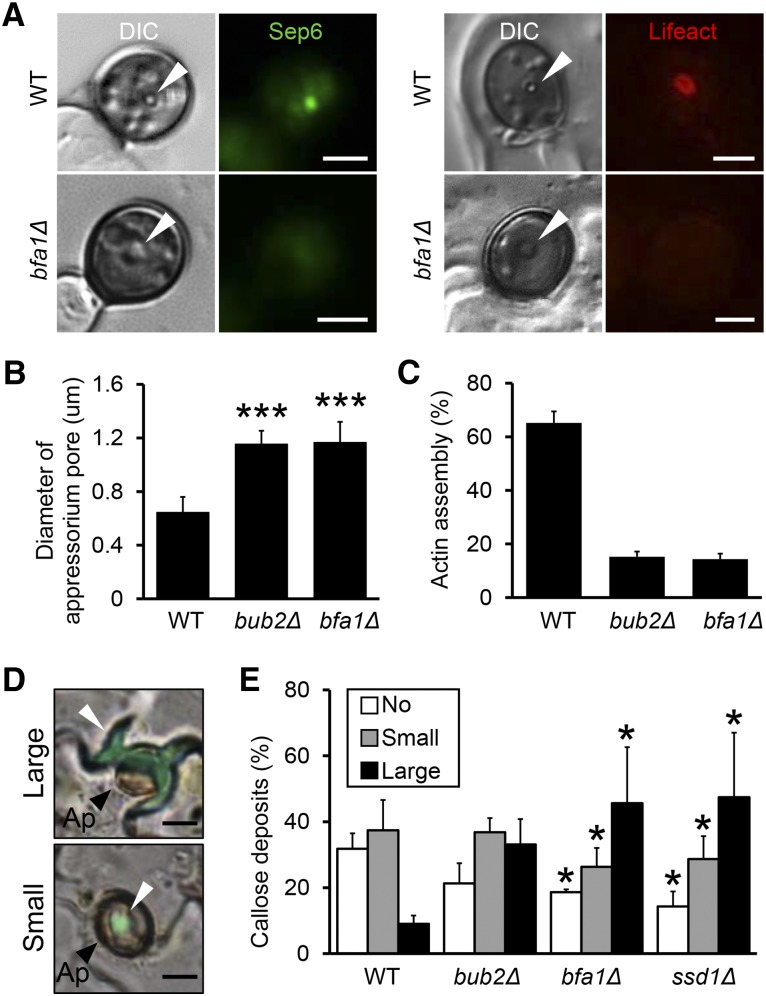Figure 9.
Co Bub2/Co Bfa1 Affects the Localization of Septin and Actin and the Defense Response of the Plant.
(A) Representative images showing septin and actin at the appressorium pore in the wild type and Co bfa1Δ during appressorium development. Strains harboring the SEP6-GFP gene were incubated on glass slides for 18 h, and strains harboring the LIFEACT-RFP gene were incubated on a cucumber cotyledon for 2 d. Arrowheads indicate appressorium pore. Bars = 2.5 μm.
(B) Diameter of the appressorium pore in the wild type, Co bub2Δ, and Co bfa1Δ with the LIFEACT-RFP gene (means + se; n = 4). At least 50 appressoria were scored. Each strain was incubated on a cucumber cotyledon for 2 d. Asterisk represents significant differences between the wild type and each mutant (Student’s t test; ***P < 0.005).
(C) Mean percentage (+se; n = 3) of conidia that formed an actin assembly at the appressorium pore in the Co bub2Δ and Co bfa1Δ strain with the LIFEACT-RFP gene. At least 50 appressoria were scored. Each strain was incubated on a cucumber cotyledon for 2 d.
(D) Representative images of papillae with callose deposits at sites of attempted penetration by C. orbiculare appressoria. Large: callose formation larger than boundaries of the appressorium; small: callose deposits smaller than boundaries of the appressorium. Arrowheads indicate papillae. Ap, appressoria. Bars = 5 μm.
(E) Mean percentage (+se; n = 4) of callose deposits at sites of attempted penetration by appressoria of the wild type, Co bub2Δ, Co bfa1Δ, and Δcossd1 at 3 dpi. At least 400 appressoria were scored. Asterisk represents significant differences between the wild type and each mutant (Tukey’s test; *P < 0.05).

